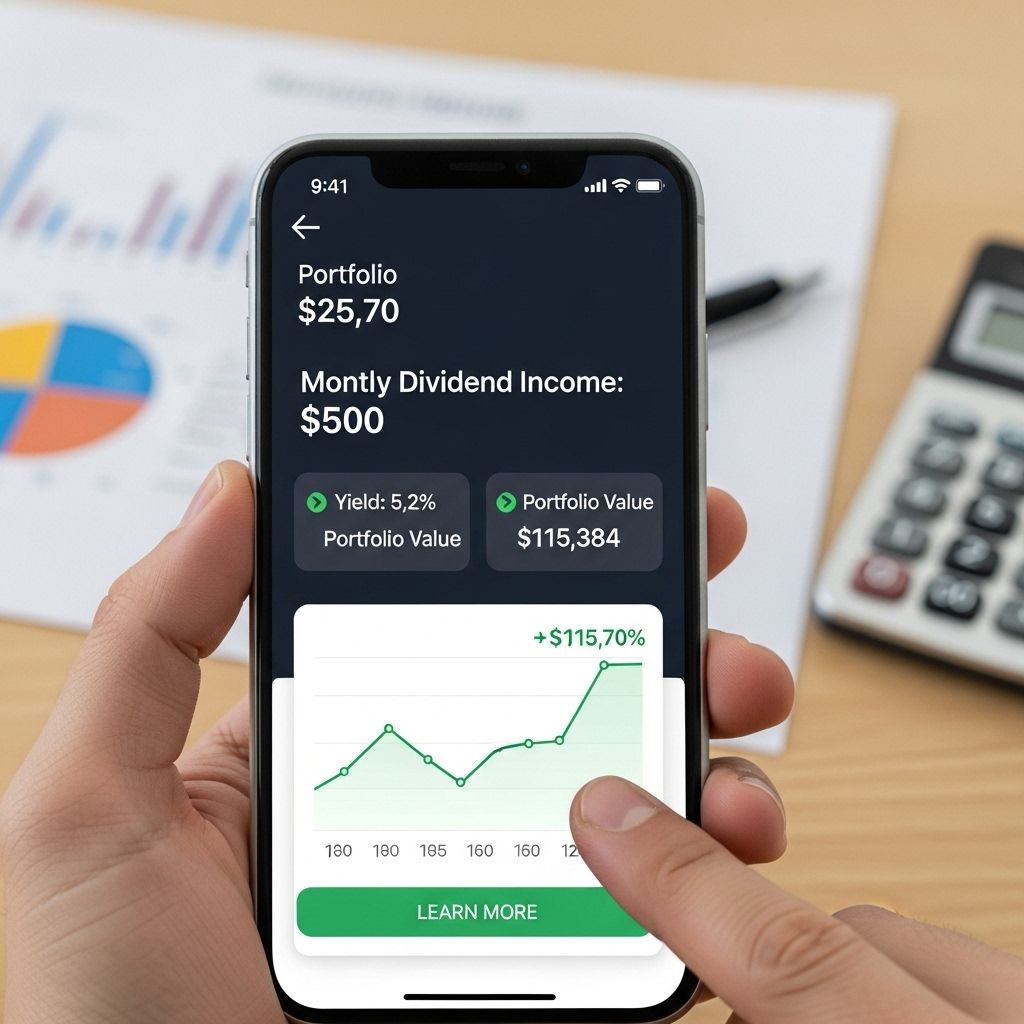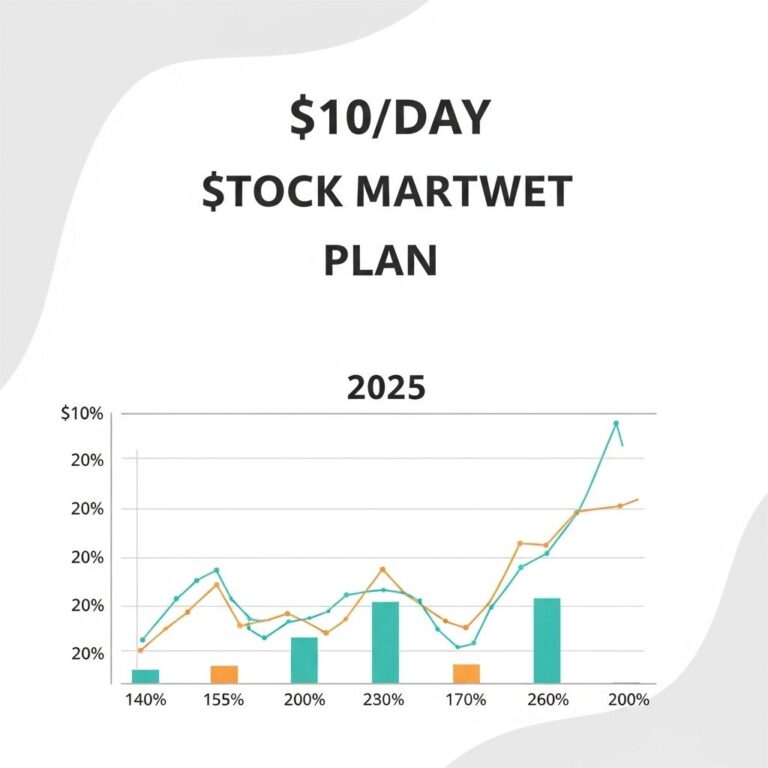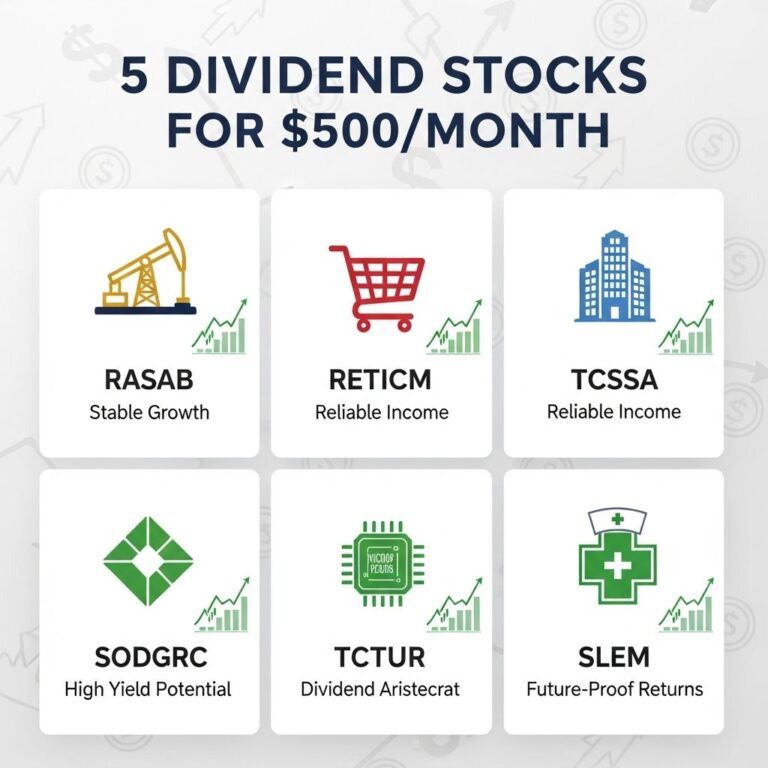In today’s investment landscape, generating passive income has become a primary goal for many individuals looking to enhance their financial security. One of the most popular methods to achieve this is through dividend investing. Understanding how to earn consistent monthly income from dividend stocks can transform your financial future. This article delves into strategies, tips, and essential concepts to help you earn $500 a month through dividends.
Table of Contents
Understanding Dividends
Dividends are payments made by a corporation to its shareholders, typically derived from profits. They serve as a way for companies to distribute a portion of their earnings back to investors. Dividends can come in various forms:
- Cash Dividends: Direct cash payments to shareholders.
- Stock Dividends: Additional shares distributed to shareholders instead of cash.
- Special Dividends: One-time payments outside of regular dividends, often issued when a company has excess cash.
The Importance of Dividend Yield
When evaluating dividend stocks, one crucial metric to consider is the dividend yield. This ratio indicates how much a company pays in dividends relative to its stock price. It is expressed as a percentage:
| Dividend Yield Formula |
|---|
| (Annual Dividend per Share / Price per Share) x 100 |
For instance, if a company pays an annual dividend of $2 per share and its stock price is $40, the dividend yield would be 5%. Higher yields can be attractive, but they may indicate risk if they’re significantly above the industry average.
Setting Your Goals
To earn $500 a month, you need clear goals based on your financial situation and market conditions. Here’s how to establish your targets:
- Determine Annual Income Requirement: Multiply your monthly income goal by 12. For example, $500 x 12 = $6,000 per year.
- Assess Your Dividend Yield: Analyze potential dividend stocks to estimate the average yield you expect to earn. A realistic yield might be around 3% to 6%.
- Calculate Required Investment: Use the formula:
| Required Investment Calculation |
|---|
| Required Investment = Annual Income / Dividend Yield |
For example, if you target a 4% yield: Required Investment = $6,000 / 0.04 = $150,000.
Choosing the Right Stocks
Not all dividend stocks are created equal. Here are factors to consider when selecting dividend-paying stocks:
- Dividend History: Look for companies with a stable or increasing dividend history, indicating reliability.
- Financial Health: Analyze the company’s balance sheet, cash flow, and earnings to ensure it can maintain its dividends.
- Payout Ratio: This ratio indicates the percentage of earnings paid out as dividends. A lower ratio (typically below 60%) suggests sustainability.
- Sector Diversification: Invest across various sectors to mitigate risk. Different industries respond differently to economic changes.
Building a Diversified Portfolio
Diversification can significantly reduce risk. A well-structured portfolio might look like this:
| Sector | Example Stocks | Percentage Allocation |
|---|---|---|
| Utilities | Duke Energy, NextEra Energy | 20% |
| Consumer Staples | Coca-Cola, Procter & Gamble | 20% |
| Healthcare | Johnson & Johnson, Pfizer | 20% |
| Financials | JPMorgan Chase, Wells Fargo | 20% |
| Real Estate | Realty Income, AvalonBay Communities | 20% |
This allocation ensures that your income is not solely dependent on one sector’s performance.
Reinvesting Dividends
While your goal might be to earn $500 a month, consider reinvesting dividends for compounding growth. This strategy can increase your investment principal, ultimately leading to higher future income. Here’s how to implement a reinvestment strategy:
- DRIPs (Dividend Reinvestment Plans): Many companies offer DRIPs, allowing you to automatically reinvest dividends into additional shares without paying commissions.
- Purchase Additional Stocks: Use dividends to buy shares in other companies, broadening your investment base.
Tax Considerations
Understanding how dividends are taxed is crucial, as it directly affects your net income. Here are key points to remember:
- Qualified Dividends: Generally taxed at a lower rate than ordinary income, provided you meet specific holding period requirements.
- Ordinary Dividends: Taxed at your regular income tax rate.
- Tax-Advantaged Accounts: Consider holding dividend stocks in accounts like IRAs to defer or avoid taxes.
Monitoring and Adjusting Your Strategy
Once you’ve established your portfolio, it’s essential to monitor and adjust your strategy over time. Here’s how:
- Regular Review: Periodically assess your holdings and overall portfolio performance.
- Stay Informed: Keep up with news related to your investments, including earnings reports and industry trends.
- Be Flexible: Be willing to adjust your strategy based on changes in the market and your financial goals.
Final Thoughts
Earning $500 a month through dividends is achievable with the right strategy, discipline, and patience. By understanding the fundamentals of dividends, setting clear financial goals, selecting quality stocks, and continuously monitoring your investments, you can build a reliable income stream. Remember, investing is a long-term journey, and the earlier you start, the more substantial your results will be.
FAQ
What are dividends and how do they work?
Dividends are payments made by a corporation to its shareholders, typically as a distribution of profits. Companies that generate profits may choose to share a portion of these earnings with their investors in the form of dividends.
How much do I need to invest to earn $500 a month in dividends?
To earn $500 a month, or $6,000 a year, you’ll need to calculate the required investment based on the average dividend yield of your chosen stocks. For example, if the average yield is 5%, you would need to invest approximately $120,000.
What are some strategies to maximize dividend income?
To maximize dividend income, consider investing in high-yield dividend stocks, diversifying your portfolio across various sectors, and reinvesting dividends to take advantage of compound growth.
Are dividend stocks a safe investment?
While dividend stocks can provide a reliable income stream, they are not without risk. It’s essential to research the company’s financial health and market conditions before investing.
How often do companies pay dividends?
Most companies pay dividends quarterly, but some may choose to pay annually, semi-annually, or monthly. It’s important to check the dividend schedule for each specific stock.
Can I rely solely on dividends for income?
While dividends can provide a steady income stream, it’s advisable to have a diversified investment strategy that includes other sources of income and capital appreciation to mitigate risks.









